
Radio engineering time travel (1924)
I invite you to look at the "pictures" related to radio technology. They come from various sources. The gallery has its sister version in Polish and Russian. Versions in other languages will be added successively. More detailed descriptions can be found in other language versions (articles are related and can be displayed by clicking on the icons with flags on the left, top of the TRIODA website). Of course, I will complement translations of signatures quite slowly. All descriptions are displayed using the present tense and not the past - this is not a mistake only deliberate action - a reference to the original descriptions from those years. In order not to delay the possibility of viewing the gallery, this site is made available as a "site under construction" - for which I apologize to all guests. At the beginning and end of each set of photographs there are links allowing to change the period - calendar year.
[Previous period] [Next period]

Radio Reception in the Depths of the Grand Canyon
"CALIFORNIA broadcasting stations were of considerable assistance in making the recent Grand Canyon expedition of the United States Geological Survey a success, for, in spite of adverse prophecies, some of them widely circulated in print, that a radio set could receive nothing in the depths of the canyon, broadcasting was heard from Los Angeles, San Francisco, Phoenix, Ariz., Salt Lake City, and on one occasion from Colorado Springs."
(Radio for January, 1924)

Mitsui & Company's Station XYZ -SKY at Pekin, China, equipped with six towers and a 400-kw Alexanderson alternator driven by a steam turbine.
(Radio for January, 1924)

Radio Station KOB
"KOB is equipped with two combination telephone -telegraph transmitters, one of 500 watts output and the other of 50 watts. Both these transmitters are of the vacuum tube type, and either may be connected instantly to the 14-0-ft. fan aerial over the Engineering building. Two other telegraph transmitters of the spark type are also available, and are at present being utilized for experimental purposes. One of these is a 1000 -watt set of the synchronous gap type, while the other is a standard Navy 500 -watt quenched gap transmitter, complete with motor -generator power supply. The station is equipped with several receives, including a Westinghouse type RC, a Grebe type CR 8, a three -circuit regenerative honeycomb coil universal wavelength set with detector and two -stage amplifier, a Reinartz tuner and detector, and a two -circuit honeycomb coil set with six -tube detector -amplifier. The latter set is very selective and sensitive, being adapted to all wavelengths, and having three stages of radio -frequency amplification, a detector and two stages of audio -frequency amplification. A Western Electric loud speaker, with push - and -pull power amplifier, and a large -sized Magnavox loud talker are included in the equipment. A Kolster decremeter, such as is used by the Radio Inspection Service of the Department of Commerce for standardization work, has recently been added..."
(Radio for January, 1924)
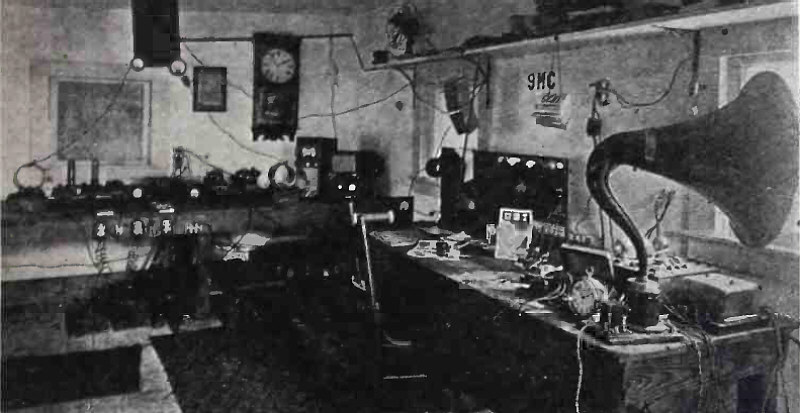
Radio Station 9MC
"9MC was built and is owned by A. H. Cain at Roodhouse, Ill., and is located in a specially built radio shack 14x18 out in an open field where there is nothing to consider except building an efficient set. The ground is 12,75 -in. pipes driven 5 ft. in the ground and also an underground counterpoise of 60 No. 14 copper wires in the form of a large oval 160 ft. wide by 230 ft. long filled with wires radiating from the center 6 degrees apart, over 7000 ft. of wire 6 in. under the ground."
(Radio for January, 1924)

Radio Station 2WA and 2XAT
"Station 2WA and 2XAT, owned and operated by D. J. Pieri at 154 East 175th, New York City, has been doing some fine D.X. work, including the handling of many messages from 6XAD. On November 6th he was in communication with 6XAD for over an hour and a half..."
(Radio for January, 1924)

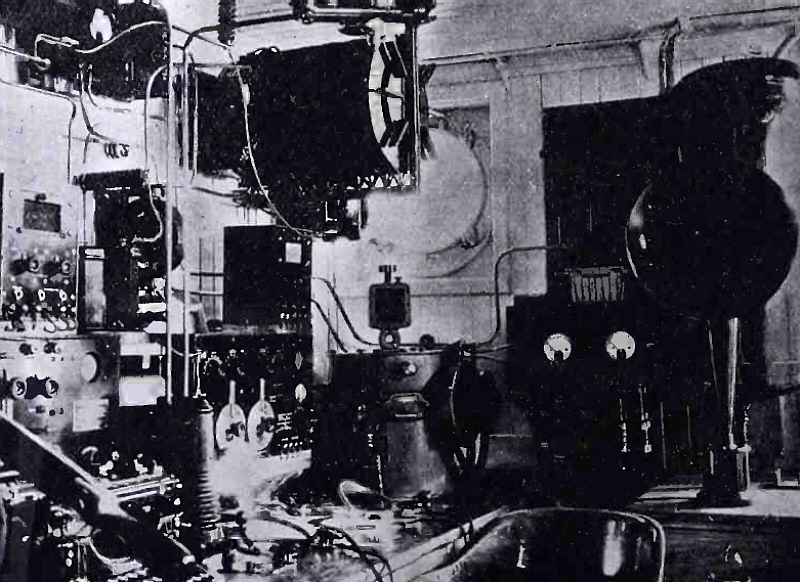
A 2 -K.W. Arc Transmitter Which Was Copied 1980 Miles Away (above one of the Ice Patrol Cutters)
(Radio for February, 1924)

Studio Building, Antenna and Power House of KGO, the Pacific Coast Broadcasting Station of the General Electric Company at Oakland, California
(Radio for February, 1924)

Radio Station 6JX-6BVW-6ZU
"Starting at left is seen a well known instrument, the station land phone, which usually reposes out of the way on a hook, but which the photographer thought looked better on the table. This phone has proved very handy for BCL's who are forever calling when voice is used on the air and requesting selections to be played, etc..."
(Radio for February, 1924)

Pacific Coast Station KGO - Interior of Main Studio
"KGO, the second of three super - broadcasting stations planned by the General Electric Company, came on the air January 8th on a wavelength of 312 meters. This new station is at Oakland, California, and is intended to serve the entire Pacific Coast...
..The buildings at KGO have been especially constructed to house equipment that is used exclusively for popular broadcasting..."
(Radio for March, 1924)

Pacific Coast Station KGO - Operating Room in Power House
(Radio for March, 1924)

Pacific Coast Station KGO - Generator Room in Power Station
(Radio for March, 1924)

Pacific Coast Station KGO - Control Room in Studio Building
(Radio for March, 1924)

Mexican Radio Station CYL
Radio CYL at Mexico City is owned and operated by LaCasa del Radio in conjunction with El Universal, a daily newspaper. It has been on the air each evening as a 500 -watt station since December 7, 1923, reports having been received from Canada, Havana, Central America and nearly every state in the United States. All broadcasting is on a wavelength of 500 meters. The programs consist of war bulletins and music from the many fine musicians and singers in Mexico City. The transmitting equipment was installed by the Texas Radio Syndicate of San Antonio, Texas, under the personal direction of S. A. Hodges.
(Radio for March, 1924)

The Radio Network of the Navy - Radio Compass Station at Cape Elizabeth, Me.
(Radio for April, 1924)

The Radio Network of the Navy - 100 Kw. and 12 Kw. Arc Converters at Heuia, Oahu, T. H.
(Radio for April, 1924)
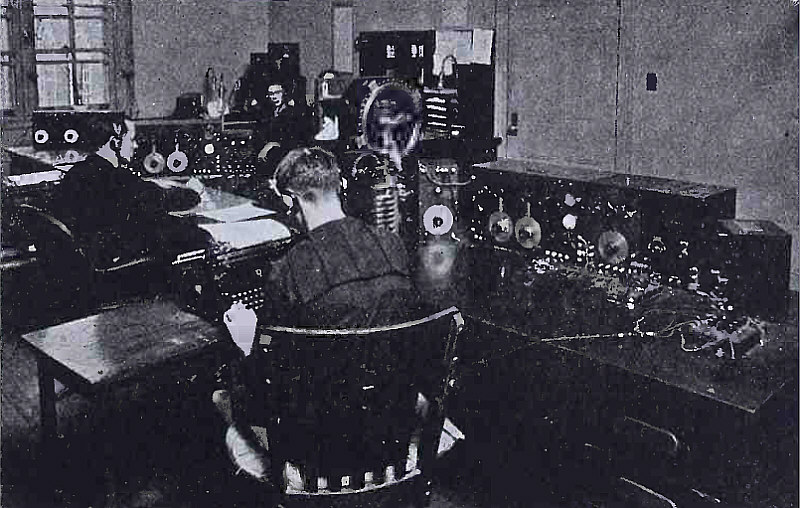
The Radio Network of the Navy - Remote Control Receiving Station at Norfolk, Va.
(Radio for April, 1924)

Major E. H. Armstrong at His Newest Type of .Super-Heterodyne
(Radio for May, 1924)

A portable radio set brings the world to the summer camp.
(Radio for June, 1924)

Super-Heterodyne in Use for Broadcast Reception on Moving Train.
(Radio for June, 1924)

Giant Super-Heterodyne Built by F.R. Greene of New York City. It uses either 8, 9, 11 or 14 tubes, has 19 dials, and the cabinet is 5½ ft. long, 3½ ft. high and 16 in. deep.
(Radio for July, 1924)
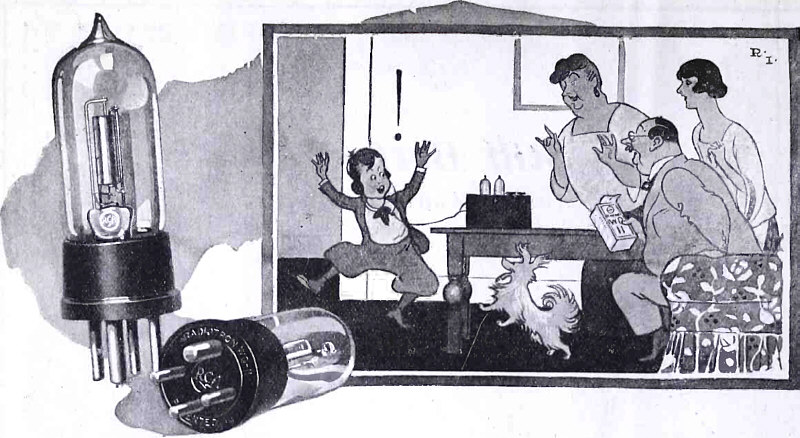
Radiotrons WD-11 and WD-12 Made History
"These are dry cell tubes - the tubes that made possible the swift progress of radio in the home everywhere. They meant clear tone - undistorted detection - radio and audio amplification - and volume reproduction - all with dry batteries. They meant radio in the city - on the farm - off in camp - everywhere!"
(Radio for August, 1924)

Mechanism W hereby F. W. Dunmore, U. S. Bureau of Standards, Sets Clock by Radio
(Radio for August, 1924)

Ralph Slade, New Zealand 4AG, Who Has Been Logging "Yanks" for Two Years, including 1SG, 2ATF, 5KC, SFT, 6CMR, 6BSG, 621 WT, GARB, 6IF, 6CGW, 6CNK, 6PL, 6MG, 7AEL, 7SC, 8Y AE, 8ZY, 9CVO, 9AXB, 9CMK, 9BED, 9UU, 9ZT, and Can. 9BX
(Radio for August, 1924)

Radio Station 6RY, Employing Storage Batteries to Give 500 bolt Plate Potential
"6RY, the new 10-watt C. W. and phone station of Julius Brunton & Sons, at 1380 Bush Street, San Francisco, is noteworthy in being operated entirely with storage battery power. A plate potential of 500 volts is secured from 250 cells of Willard type CBR batteries. An 8 -volt A battery and 22 -volt C battery complete the power equipment. While many broadcast stations have adopted batteries to eliminate generator ripple and a.c. hum, this practice is novel for an amateur station..."
(Radio for August, 1924)

Schematic Diagram for 10-Watt C.W. and Phone at 6RY (see previous photo)
(Radio for August, 1924)

Radio 71T- 7.4CP -7XAF -KFJR
"This station, which is operated by Ashley C. Dixon and his son at Stevensville, Montana, was licensed March 15, 1923. Since then many improvements have been made and, accordingly, much good work has been done."
(Radio for August, 1924)

One of the berated "Teishinshos." A section of the radio room on the Toyo Kisen Kaisha liner "Tenyo Maru," showing powerful 7-kilowatt quenched spark transmitter
(Radio for September, 1924)
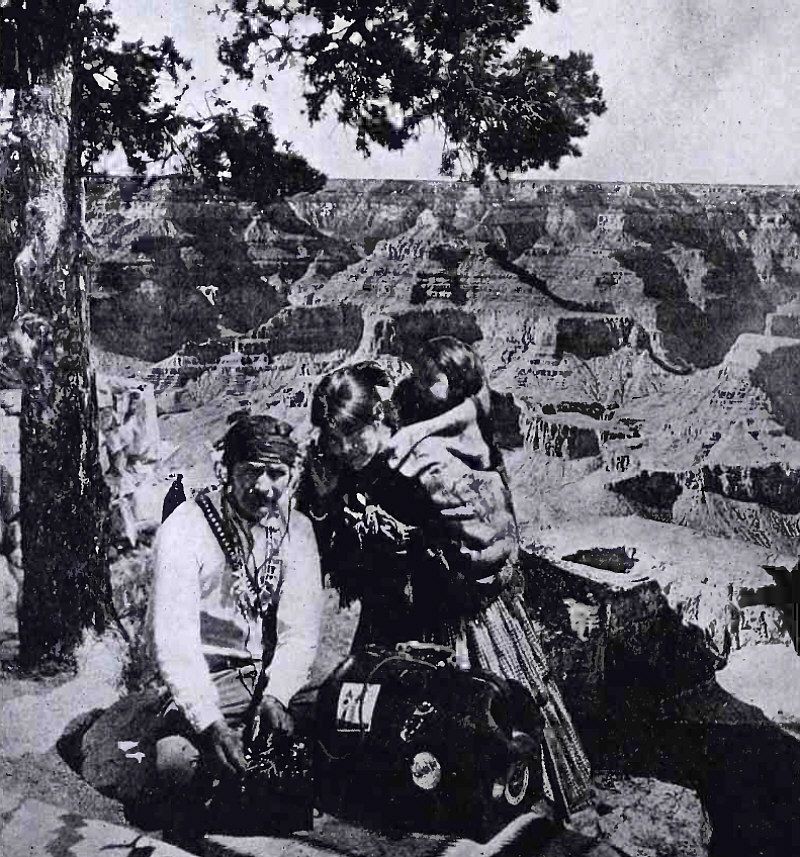
A Navajo Family Listening to Radio on the Brink of the Grand Canyon of Arizona
(Radio for September, 1924)

Radio Guiding New Mail Planes
(Radio for September, 1924)

New Differential Recorder for Automatic Reception of Morse or Printing Telegraph Messages, As Devised by A. Hoyt Taylor, U. S. Navy Physicist
(Radio for September, 1924)

Herbert Hoover, Secretary of Commerce, Whose Address at the Opening of the Pacific Radio Exposition is Herewith Presented
(Radio for October, 1924)

2FC, Farmers' Broadcast Transmitting Station, Seven Miles From Sydney With Which It Is Connected By Wire Telephony.
(Radio for October, 1924)

100-Watt Transmitter at Australian 2CM
(Radio for October, 1924)

500-Watt Transmitters Under Construction at Amalgamated Wireless Shops in Sydney
(Radio for October, 1924)

Major Genera! C. McK. Saltzman, Chief Signal Officer U. S. Army
(Radio for November, 1924)

Operating Panel of Army Short Wave Set. Note the simple means of adjustment, the large white dial being divided to provide ten channels of telegraphic communication over a wave band of less than 4 meters.
(Radio for November, 1924)

Rejuvenating a Burnt-out Tube. (a) Burn-out. (b) Broken down. (c) Old stem glass bulb. (e) Sealed in. (f) Ready for testing.
(From article: The Locked Door Tube Factories - An Interesting Account of the Methods and Processes Employed in the Manufacture and Repair of Unlicensed Vacuum Tubes)
(Radio for November, 1924)

The Heart of a Vacuum Tube Factory, the "Exhaust Positions" and "Bombarder." The young lady is not the bombarder; she is merely sealing-off a row of exhausted and bombarded tubes. An expert tube-man generally operates this machine.
(Radio for November, 1924)

An Automatic Bombarding and Exhausting Machine. This same work machine does as the machine in above, but most of the operations are automatic. Notice the C. W. bombarder in the foreground.
(Radio for November, 1924)

Bob-haired Bandits Welding Nickel Plate and Grid Supports Onto Copper-clad Sealing-in ¡Vires
(Radio for November, 1924)
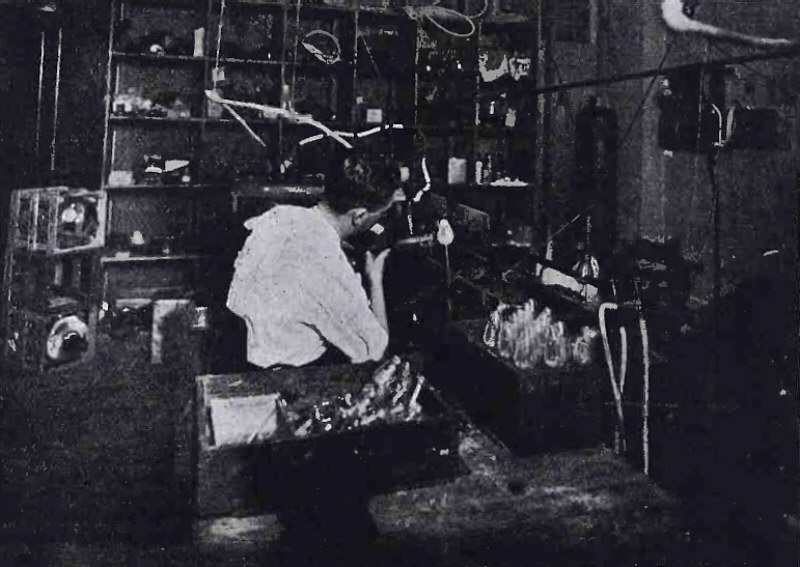
In the lair of the vacuum-tube bootlegger! This shows a plant in actual operation. See poor tube, filled with fire! The tube is on a vacuum-pump and is being bombarded or heated by high-frequency current from a 2 -KW radio spark-transmitter, in order to drive out occluded gases. The idea is right but the equipment is crude and imperfect.
(Radio for December, 1924)

Electric spot-welding plates and grids onto their supporting wires. The weld is made by a low-voltage, high-amperage arc. Note the rack full of completed stems in the foreground. These are ready for sealing into bulbs.
(Radio for December, 1924)

Here is a real vacuum-tube bombarder. It is really a powerful little 100-watt CIY transmitter, using two 50-watt power tubes. The long-handled heating coil besides the right-hand power tube is for bombarding 201-A tubes; the other one resting against the cabinet is for 199 tubes. To the right of the bombarded is a foot-switch for controlling the machine. This is the latest and most efficient bombarding apparatus so far produced.
(Radio for December, 1924)

C. Francis Jenkins and His Apparatus for Radio Projection of Photographs. Radio Station 6BBQ.
(Radio for December, 1924)

The Springfield, Illinois, plant of Sangamo Electric Company, the world's largest plant devoted to the manufacture of electrical meters and instrument transformers.
(Radio for December, 1924)




